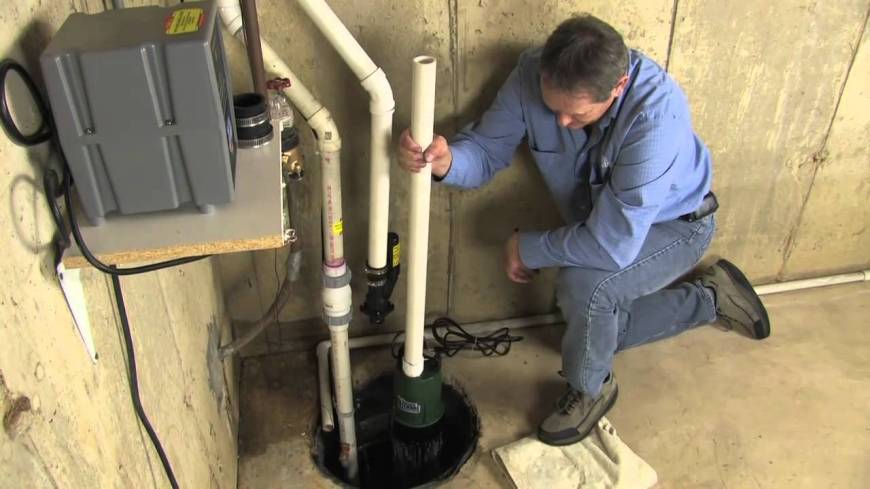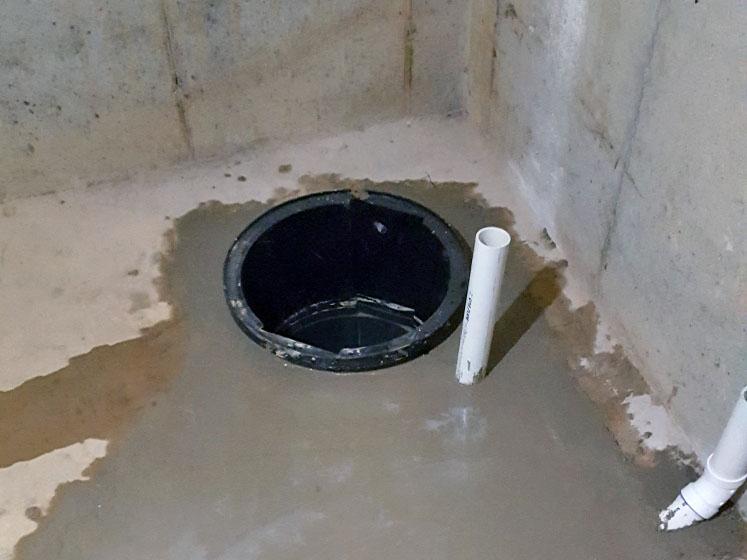Trusted Methods for Servicing a Sump Pump
Trusted Methods for Servicing a Sump Pump
Blog Article
The publisher is making a number of great pointers regarding Cleaning & Maintenance Tips for Your Home's Sump Pump in general in this post which follows.

Sump pumps are crucial elements in many homes, specifically in locations vulnerable to flooding or extreme moisture. They help prevent water damage by successfully getting rid of excess water from cellars or crawl spaces. Nonetheless, like any other home appliance, sump pumps call for normal upkeep to guarantee they work properly when required the most. Cleansing your sump pump is an essential part of its upkeep, and understanding how to do it effectively can save you from costly fixings and prospective disasters.
Introduction
Keeping a clean sump pump is crucial for its proper performance and longevity. Ignoring this essential job can bring about clogs, malfunctions, and inevitably, water damages to your residential or commercial property. For that reason, learning how to cleanse a sump pump is vital for house owners who rely upon these tools to keep their cellars dry and safeguarded.
Indications of a Dirty Sump Pump
Knowing when your sump pump requires cleaning is vital for stopping possible malfunctions. Some usual indications that show a filthy sump pump consist of unusual sounds during procedure, decreased water flow, and noticeable particles in the pit. If you see any of these symptoms, it's essential to cleanse your sump pump quickly to avoid any kind of more issues.
Planning for Cleansing
Before you begin cleaning your sump pump, it's important to take some safety and security preventative measures. Beginning by shutting down the power to the pump to stay clear of any kind of electrical accidents. Furthermore, use suitable protective equipment, such as gloves and safety glasses, to shield on your own from dust, particles, and prospective microorganisms.
Comprehending the Sump Pump
Before diving into the cleaning process, it's necessary to have a basic understanding of exactly how a sump pump works. Typically mounted in a pit or basin listed below the basement flooring, a sump pump consists of numerous key elements, including a pump, a float switch, and a discharge pipeline. When water builds up in the pit, the float button activates the pump, which then pumps the water out with the discharge pipeline, away from the building's structure.
Detailed Guide to Cleaning Up a Sump Pump
Turning off the Power
Begin by separating the power supply to the sump pump to prevent any type of mishaps while cleansing.
Looking For Correct Performance
Prior to re-installing the pump, perform a quick examination to ensure that the float switch activates the pump correctly. Put some water right into the sump pit and observe the pump's procedure. If every little thing is working properly, you can reconstruct the pump and reconnect the power supply.
Getting Rid Of Debris and Dust
Use a bucket or a scoop to eliminate any type of visible particles, dirt, or sediment from the sump pit. Dispose of the debris properly to avoid it from clogging the pump or the discharge pipe.
Cleaning up the Pump and Drift Switch Over
As soon as the pit is clear of particles, very carefully eliminate the pump from the pit. Check the pump and the float switch for any kind of indications of damages or wear. Utilize a soft brush or towel to cleanse the surface areas and remove any gathered crud.
Purging the System
After cleaning up the pump and float button, purge the sump pit with tidy water to remove any remaining dirt or debris. This will certainly help ensure that the pump runs smoothly and effectively.
Maintenance Tips to Keep Your Sump Pump Clean
In addition to routine cleansing, there are a number of maintenance pointers you can comply with to maintain your sump pump in optimum problem:
Final thought
Cleaning your sump pump is a vital aspect of its maintenance and ensures that it runs effectively when you require it the most. By adhering to the steps outlined in this guide and including regular upkeep into your routine, you can extend the life expectancy of your sump pump and protect your home from water damages.
6 STEPS ON HOW TO CLEAN A SUMP PUMP PROPERLY
UNDERSTANDING SUMP PUMPS
Your sump pump plays a crucial role in protecting your home by managing and removing excess water. It primarily functions as a “shield”, guarding your basement against the damaging effects of water accumulation. The pump is housed in a sump pit in the lowest part of your basement, and its job is to pump out any water that collects there.
During heavy rainfalls or when snow melts rapidly, water can infiltrate your basement, posing potential risks like flooding, structural damage, and harmful mold growth. Here, the sump pump springs into action, pumping out the intruding water and directing it away from your home.
SAFETY FIRST
Before cleaning, remember to prioritize safety. Disconnect the sump pump from the power source to prevent any accidental electric shocks. Also, wear sturdy gloves to protect your hands from any sharp or dirty components within the pump.
REMOVE THE SUMP PUMP
After ensuring your safety, the next step is to remove the sump pump from its pit. Doing this might require careful maneuvering as you don’t want to damage any pump components. Once removed, clean the sump pit to remove any accumulated debris or sludge.
INSPECT THE PUMP
Inspect the pump for any visible signs of wear or damage. Check the power cord, float switch, and impeller housing. If any components look worn out or damaged, consider replacing them to ensure optimal performance.
CLEAN THE PUMP
Thoroughly clean the pump with warm, soapy water. Make sure to rid it of any dirt, gravel, or other debris that might impede its performance. You can use a toothbrush to clean the small, hard-to-reach parts of the pump.
REINSTALL THE SUMP PUMP
Reinstall the pump into the sump pit Make sure it’s positioned correctly to remove the water effectively Once it’s back in place, reconnect it to the power source TEST THE PUMP
Finally, pour some water into the pit to ensure the pump works correctly. It should start automatically and begin pumping out the water; if it doesn’t, check the power source and the positioning of the pump.
Remember, while cleaning your sump pump is an essential part of home maintenance, hiring a professional plumber for a thorough inspection and cleaning at least once a year is also important. This will ensure that your pump is in optimal condition, ready to protect your home from potential water damage.
BEST PRACTICES FOR CLEANING SUMP PUMP DISCHARGE PIPES
Regular Inspection: Regularly inspect your discharge pipes, especially during heavy rainfall or snowmelt periods. Look for any signs of blockage or damage. Early detection of problems can prevent serious issues down the line. Periodic Cleaning: Over time, sediment and debris can accumulate in the discharge pipes, impeding the flow of water. Regular cleaning helps keep the pipes clear and functioning efficiently. You can use a high-pressure water jet to effectively clean the pipes. Insulation During Winter: In colder climates, discharge pipes can freeze, blocking the outflow of water. Protect your discharge pipes from freezing temperatures by insulating them with foam pipe insulation. This will ensure the sump pump can continue to discharge water even in freezing conditions. Proper Positioning: The discharge pipe should be positioned to direct water away from your home’s foundation. Improper positioning can lead to water seeping back into the basement. Ensure the pipe is long enough and angled correctly. Installation of a Check Valve: A check valve prevents water from flowing back into your sump pit after the pump has pushed it out. Installing a check valve helps maintain the efficiency of your sump pump and reduces the risk of flooding. Minimize Pipe Turns: Every curve or turn in the discharge pipe can decrease the efficiency of water flow. By minimizing turns and bends in your discharge pipe, you can increase the efficiency of your sump pump. https://www.fullspeedplumbing.com/how-to-clean-a-sump-pump-properly9999/

Do you enjoy more info about Keep Your Sump Pump Clean, It'll Keep You Dry? Put a comment further down. We will be delighted to find out your opinions about this write-up. We hope that you come back again later on. Loved our article? Please share it. Let someone else find it. I thank you for reading our article about .
Click Here Report this page